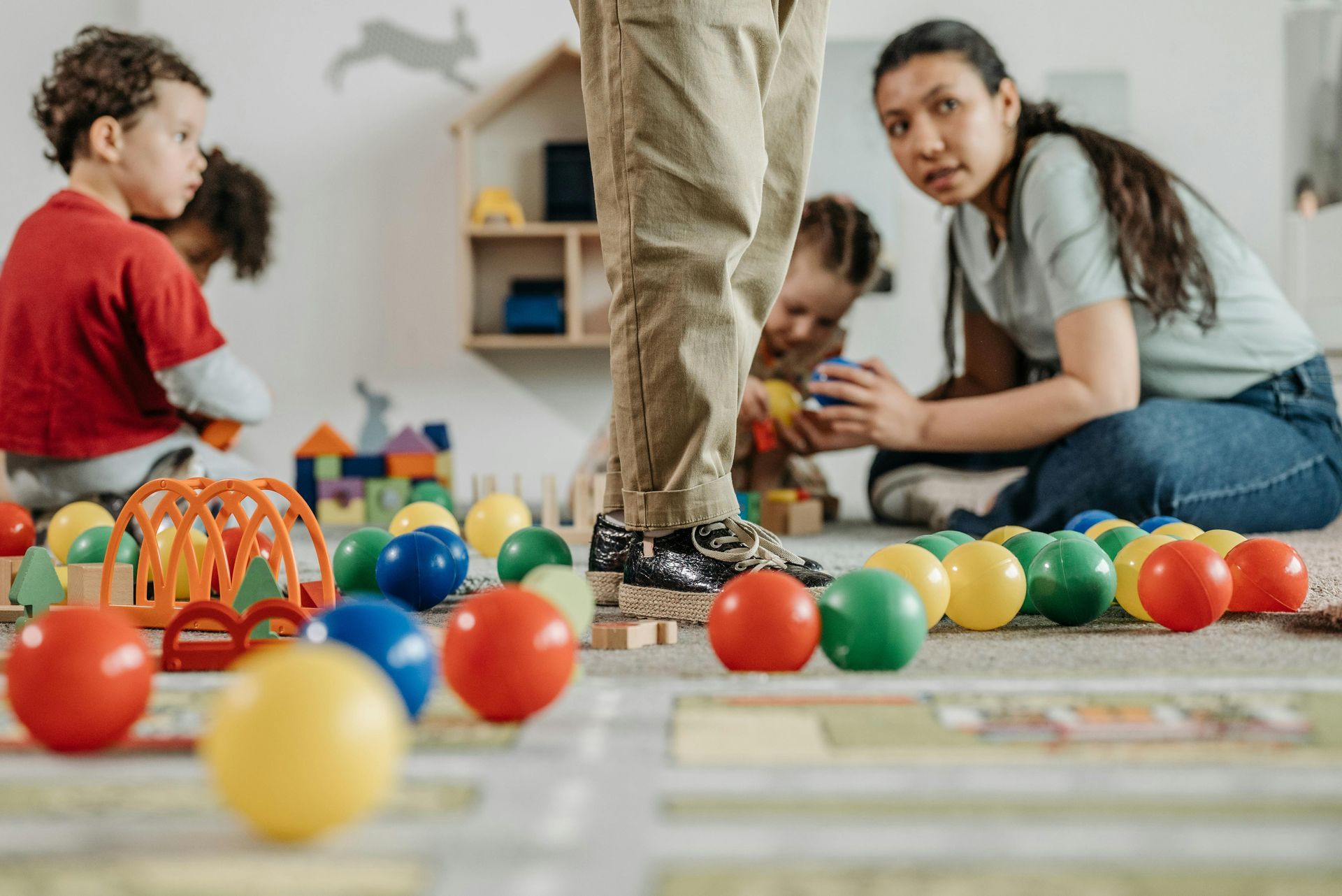Maximize Learning and Minimize Chaos with these Classroom Layout Ideas


1. Always Define Your Classroom’s Purpose
Start by considering the specific needs of the children in your care. Are you supporting infants, toddlers, or preschoolers? Each age group requires different materials, layouts, and sensory experiences. Familiarize yourself with frameworks like How Does Learning Happen? or ELECT to ensure your design aligns with the developmental goals of your curriculum.
Actionable Tip: Create a classroom map highlighting key activity zones, like dramatic play, sensory exploration, and quiet reading corners.
2. Prioritize Safety and Accessibility at All Times
Children thrive in environments that are safe and allow them to explore with confidence. Conduct a safety check of your room—ensure sharp edges are padded, heavy furniture is anchored, and electrical outlets are covered. Additionally, ensure materials and activities are within the children's reach to foster independence as they interact with their environment.
Actionable Tip: Use clear, picture labeled bins for toys and supplies, ensuring everything is visible and easy for little hands to grab and return.
3. Design for Movement and Flow
Classrooms can become chaotic if children feel restricted in their movement. Arrange furniture to create clear pathways between activity zones while avoiding bottlenecks. This promotes better flow and helps children transition smoothly between activities.
Actionable Tip: Observe how children move through the space during free play. Adjust layouts to minimize congestion and maximize comfort.
4. Create Inviting Learning Zones
A successful classroom balances structure and creativity. Each learning zone should have a clear purpose and provide tools to spark curiosity. For example:
- Dramatic Play: Stock this area with costumes, kitchen sets, or small world props to encourage imagination. Create prop boxes filled with materials and supplies to switch out your drama centre every so often!
- STEM Area: Offer building blocks, magnets, and simple science experiments to foster problem-solving.
- Reading Nook: Include cozy seating, soft lighting, and an engaging collection of books.
Actionable Tip: Rotate materials in each zone every few weeks to keep children interested while also aligning with child-led themes or learning goals.
5. Incorporate Nature and Sensory Elements
Natural elements and sensory experiences are foundational for early learning. Incorporate plants, natural light, and sensory bins into your classroom design to create a calming and engaging environment.
Actionable Tip: Introduce a small indoor garden or sensory table featuring rotating textures, such as sand, water, or kinetic foam.
6. Help Foster a Sense of Belonging
Personalization makes children feel valued and connected. Display children’s artwork, family photos, or group projects to foster a sense of pride and ownership in the classroom.
Actionable Tip: Dedicate a bulletin board to celebrate each child’s unique contributions and milestones.
7. Maintain Flexibility
Your classroom’s needs will evolve throughout the year. Be prepared to adapt layouts, materials, and even daily routines as you observe the children’s interests and developmental progress.
Actionable Tip:
Schedule periodic classroom walkthroughs to reflect on what’s working and what needs adjustment. Invite your team to share ideas during staff meetings.
8. Engage with Families
Families are an integral part of a child’s learning journey. Encourage their involvement by sharing photos, newsletters, or invitations to participate in classroom activities.
Actionable Tip: Create a “Family Corner” with a communication board for announcements, events, and parent feedback.
9. Find Inspiration for Your Classroom Setup
Finding inspiration can be a game-changer when designing your classroom. There are countless resources available to spark ideas and help you plan a space that’s both practical and exciting for children.
- Pinterest: Search for classroom setup ideas and save pins to create a vision board tailored to your needs.
- Facebook Groups: Join educator communities like "The ECC Hub" to exchange tips and photos.
- Instagram and Blogs: Follow accounts dedicated to early childhood education for creative layouts and activity setups.
- Professional Development Workshops: Attend training sessions or webinars to learn about best practices and emerging trends in classroom design.
Actionable Tip: Start a folder (digital or physical) where you save photos, notes, and links to inspiring designs. Revisit it whenever you need a fresh perspective.
Setting up a classroom for success is more than arranging furniture and materials—it’s about creating an environment where children feel safe, inspired, and empowered to explore. By tailoring your setup to meet their developmental needs and building a sense of community, you’re laying the foundation for joyful, meaningful learning experiences.
Remember, your classroom is a living space that reflects the dynamic nature of early childhood education. Take pride in the thoughtful choices you make, and don’t be afraid to try new ideas.
References:
- Ministry of Education. (2014). How Does Learning Happen? Ontario’s Pedagogy for the Early Years.
- Best Practices in Classroom Design for ECE. (Early Childhood Development Journal)










